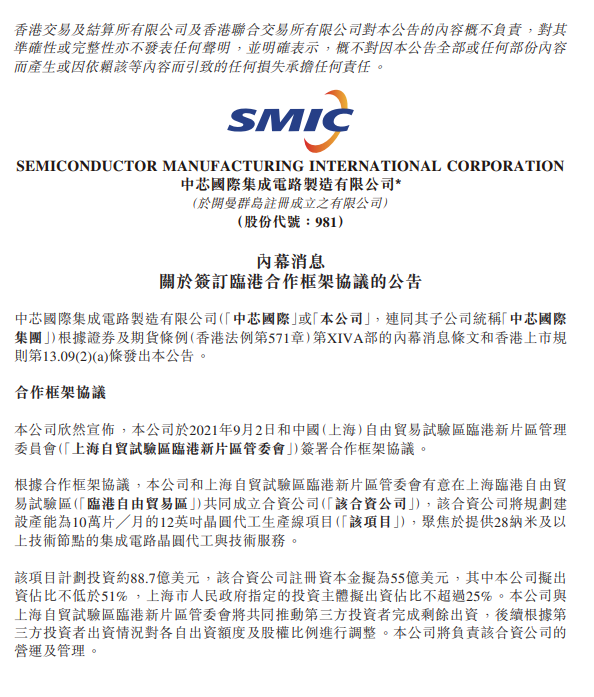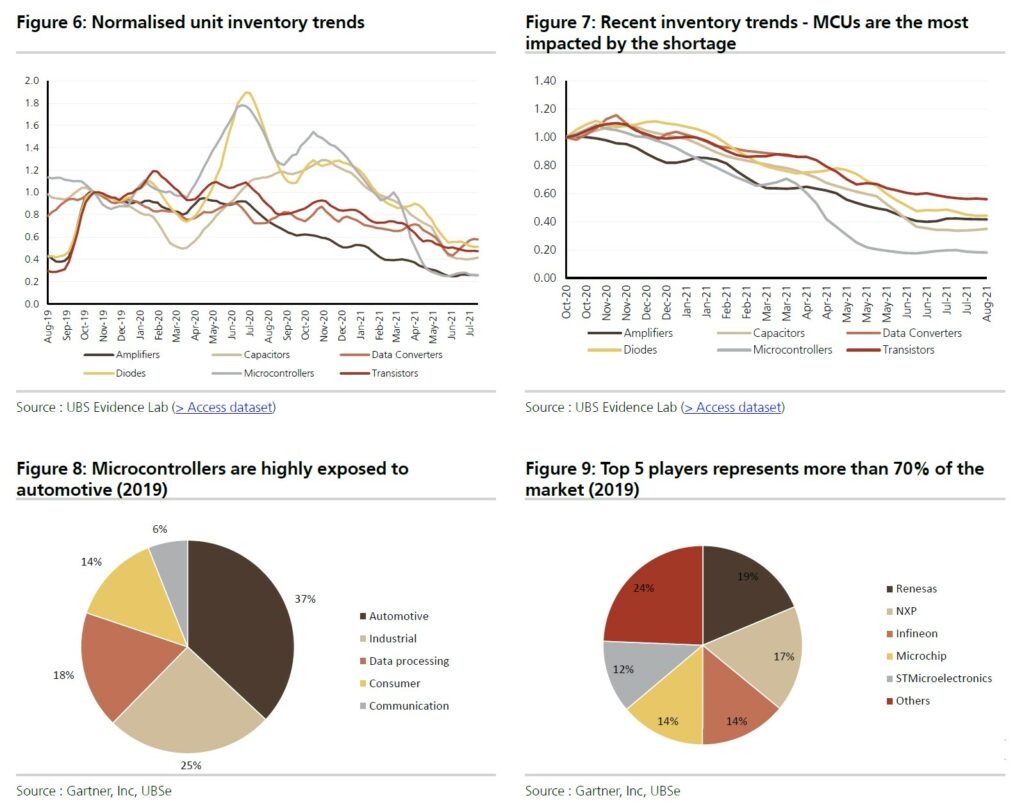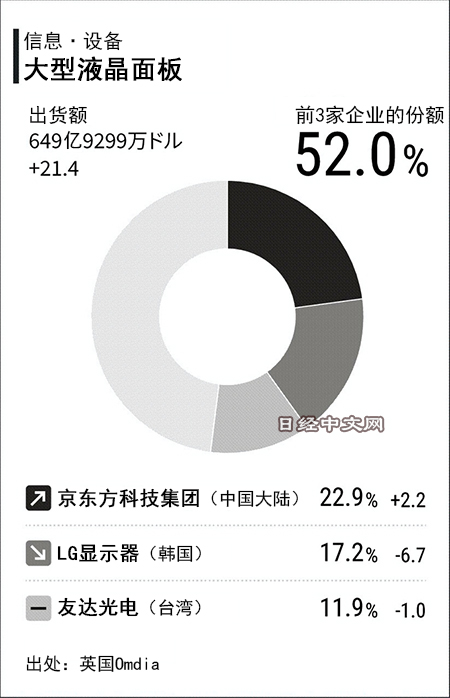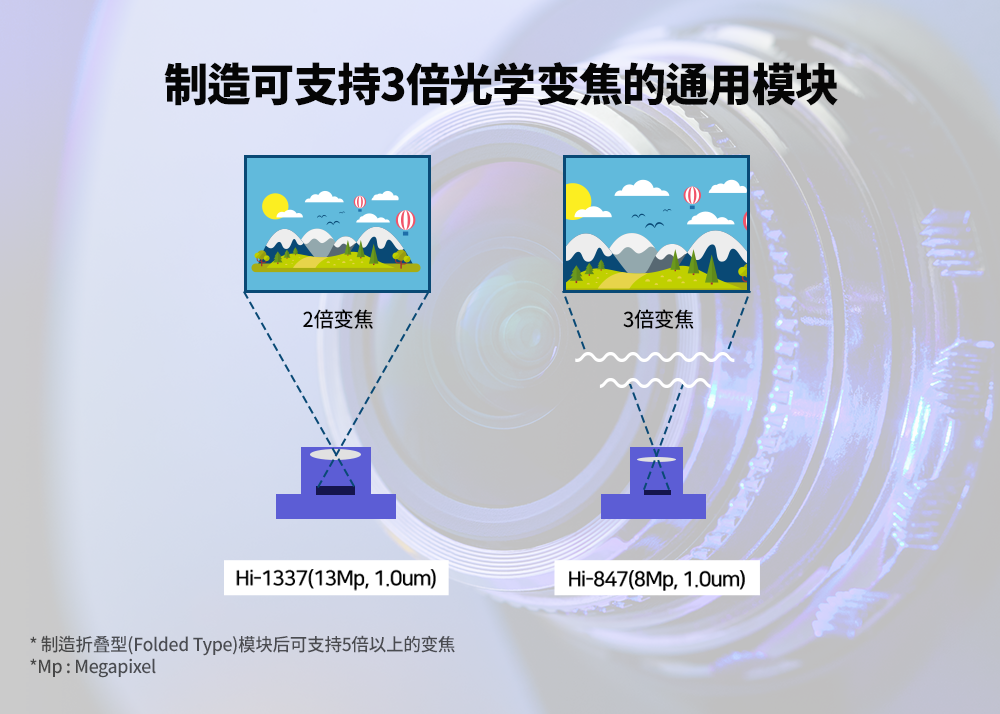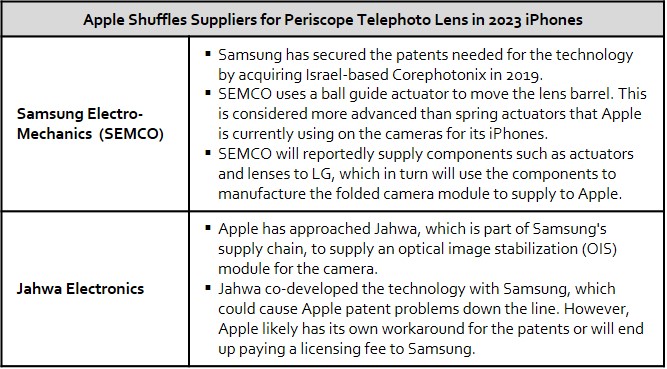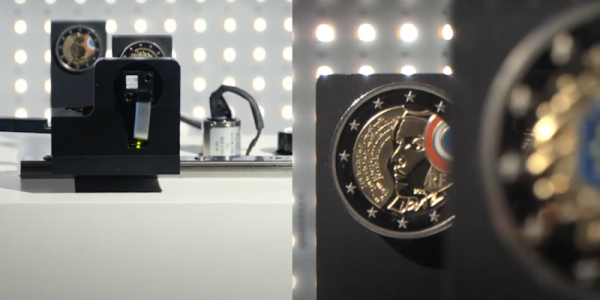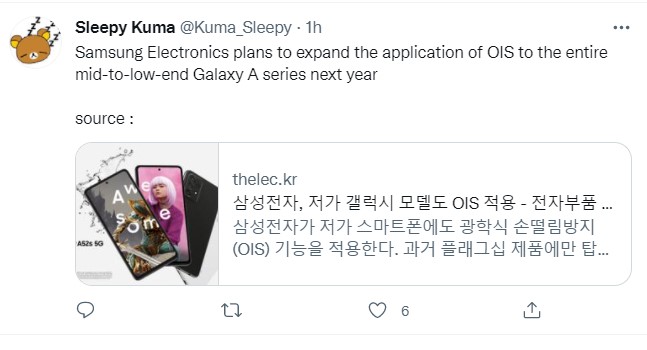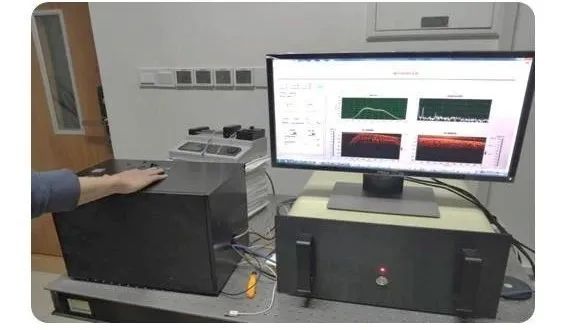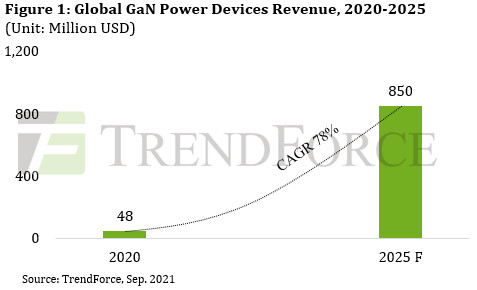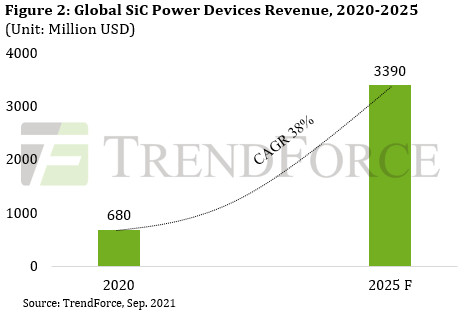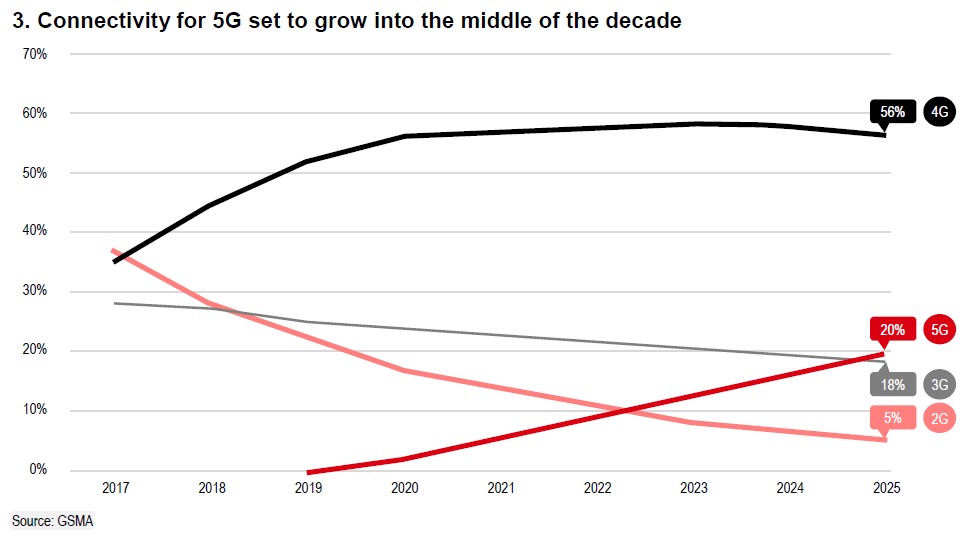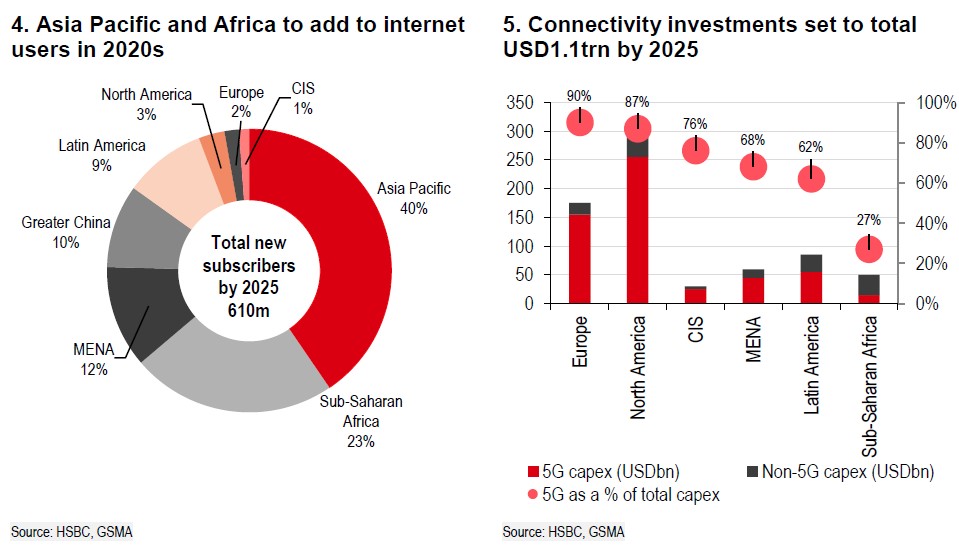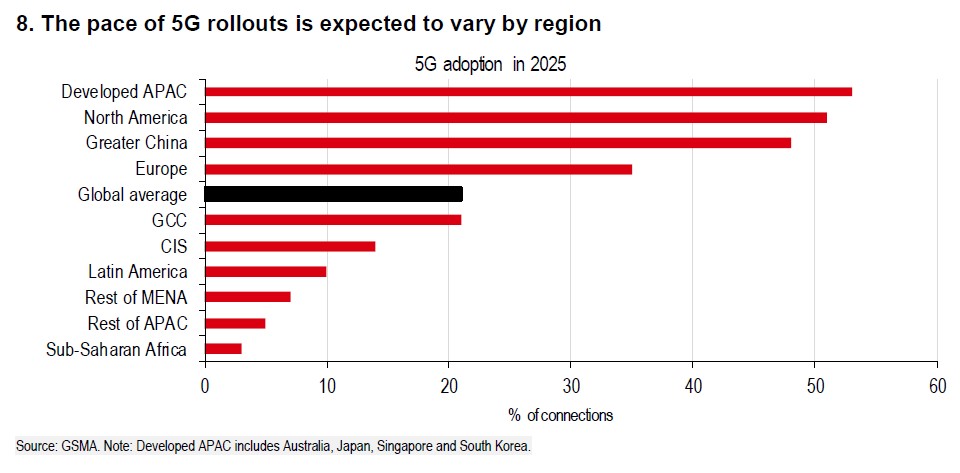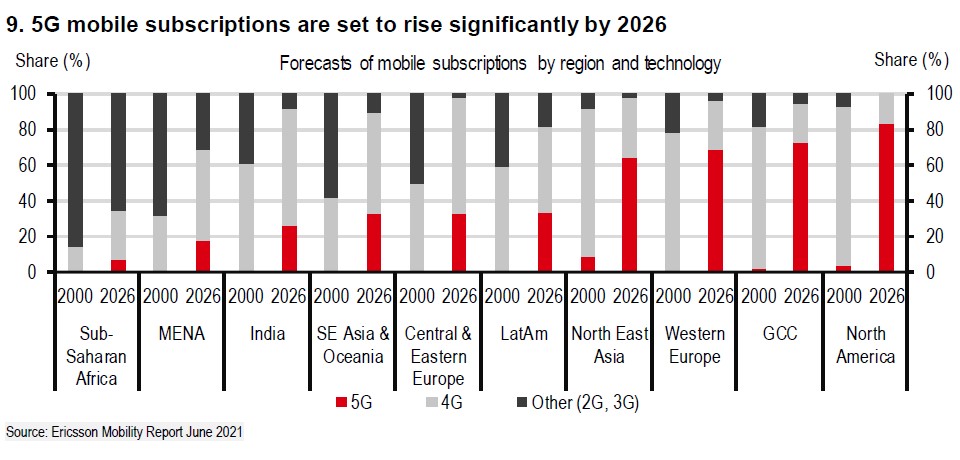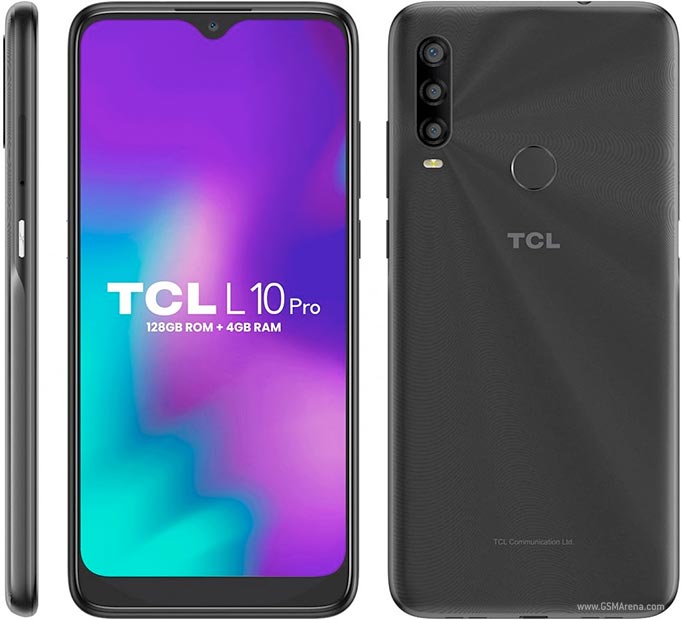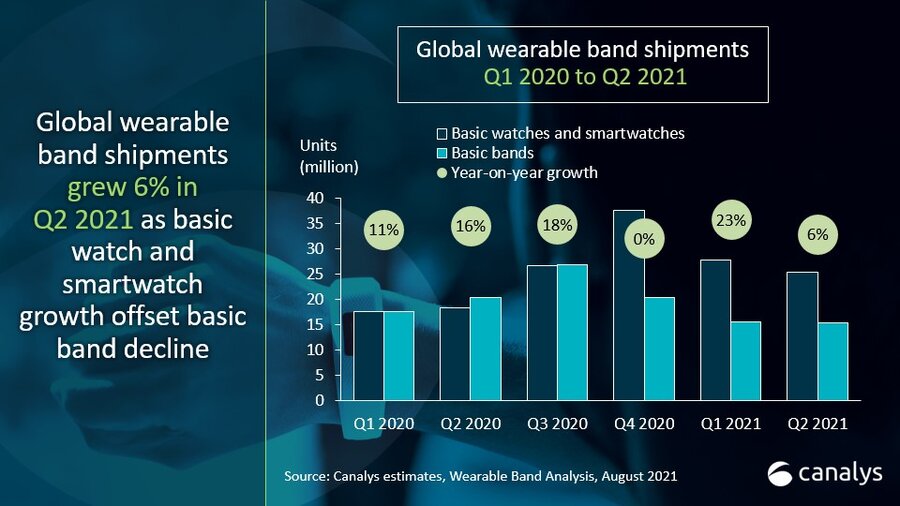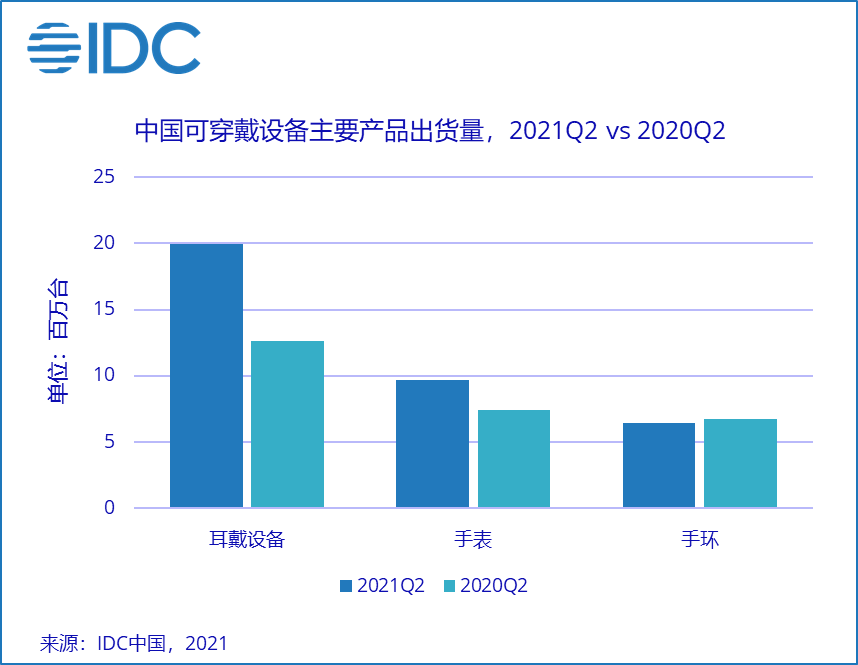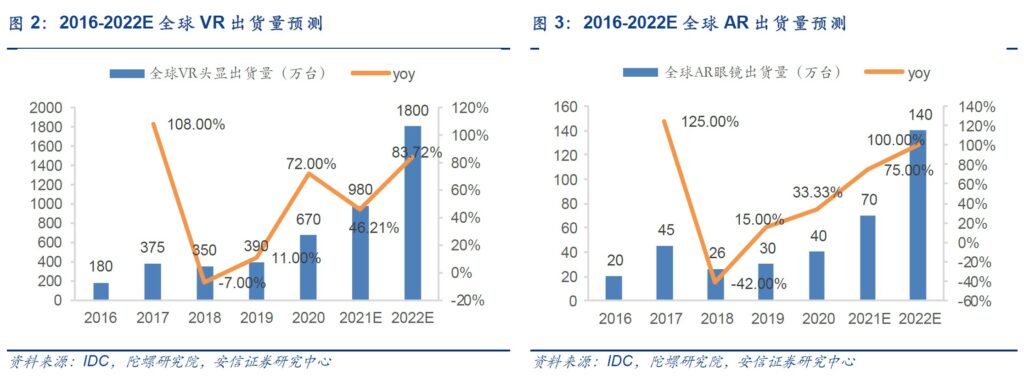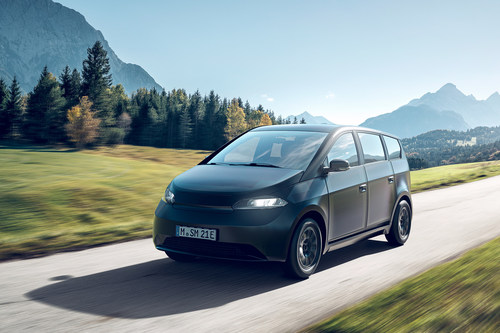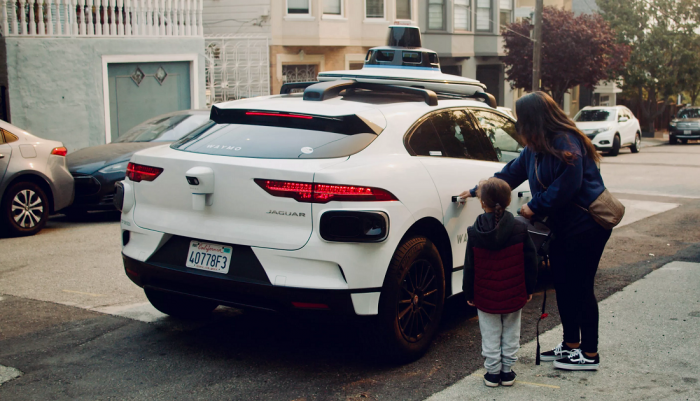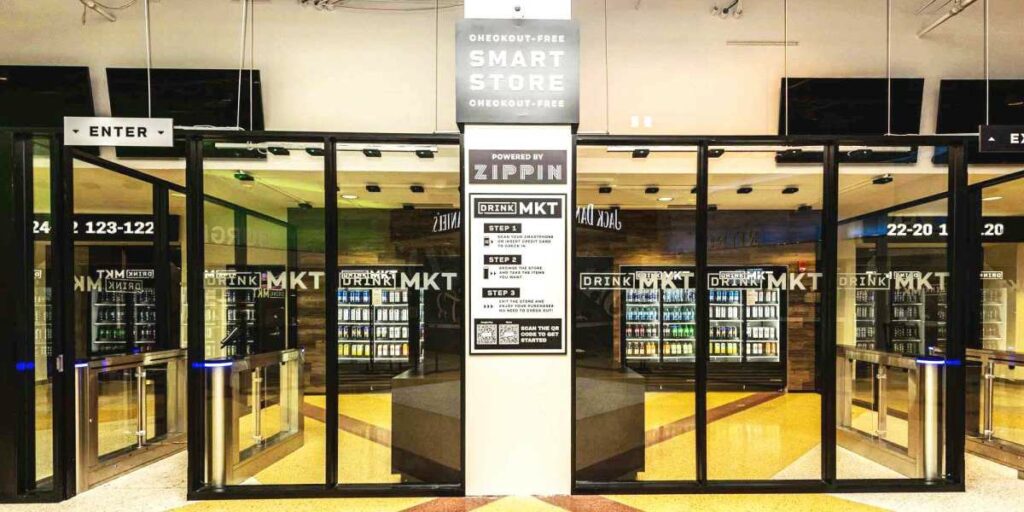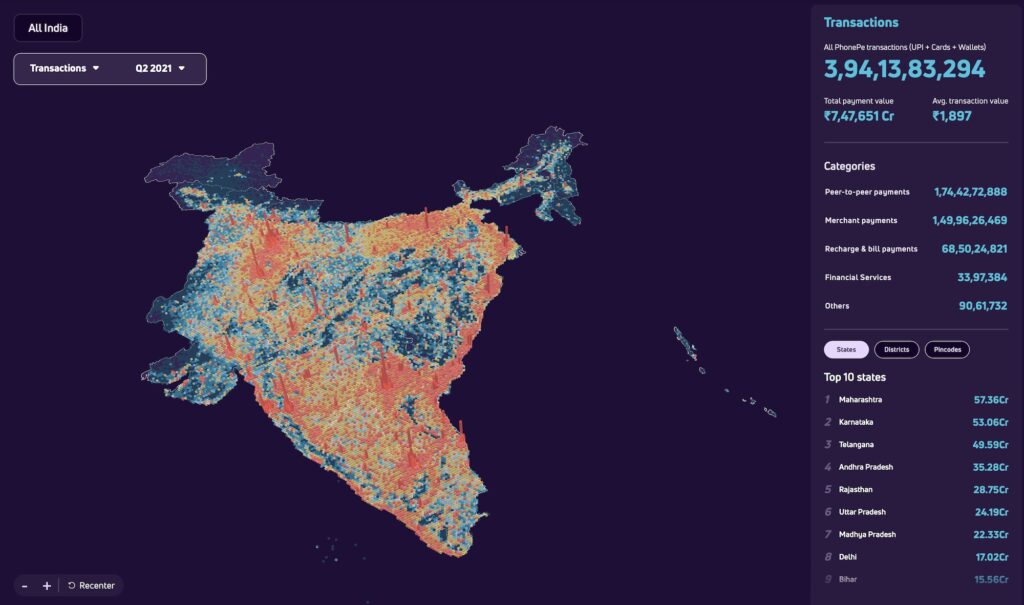
9-4 #OneGo : SMIC to invest USD8.87B to increase production capacity; SK Hynix is supplying its CIS for Samsung’s Galaxy Z Fold 3; Samsung will allegedly roll out OIS to its entire Galaxy A series in 2022; etc.
TSMC will reportedly increase its foundry quotations, starting in Oct 2021 to increase prices across the board, and in 2022, mature processes will increase by 15%-20%, and advanced processes will increase by 10%. A number of IC manufacturers have confirmed that they have received notices of price increases from TSMC, with an increase of 7%-20%. TSMC has raised its foundry prices in 2022, but the treatment of different customers is different. It is said that TSMC has the lowest increase to Apple, which is only 3%, which is much lower than other manufacturers. (CN Beta, CNYES, Sina, LTN)
Semiconductor Manufacturing International Corp (SMIC) has announced that it has agreed with the Lin-gang Special Area of China (Shanghai) Pilot Free Trade Zone to form a joint venture to build and operate the plant. Capacity is planned to reach 100,000 wafers a month, with a total investment of USD8.87B. The plant will make chips using 28-nanometer production tech or older. Currently, SMIC Shanghai has a 200mm wafer fab and a 300mm advanced process joint venture wafer fab with actual control rights. In addition, there is a 300mm wafer fab and a holding 300mm wafer fab in Beijing. In addition, SMIC has a 200mm wafer fab in Tianjin and Shenzhen. (CN Beta, CN Beta, Phone Arena, Nikkei Asia)
General Motors (GM), parent company of Chevrolet, GMC, Cadillac, and Buick, said it was temporarily halting production at six of its North American factories as a result of the global chip shortage. Four of GM’s US-based plants will be affected: Fort Wayne, Indiana; Wentzville, Missouri; Spring Hill, Tennessee; and Lansing, Michigan. Four other factories in Mexico and Canada will also go dark for several weeks as GM works to shore up its supply of chips. (The Verge, CN Beta)
U.S. sales of Ford Motor’s new vehicles in Aug 2021 declined by 33.1% from a year earlier due to an ongoing global shortage of semiconductor chips that’s wreaking havoc on the automotive industry. Ford sold 124,176 new vehicles in the U.S. last month, down 33.1% from August 2020. Truck sales dropped 29.4% while SUV sales fell 25.3%. The problem is expected to cost the global automotive industry USD110B in revenue in 2021, according to consulting firm AlixPartners. (CN Beta, Detroit News, CNBC, Market Watch)
Post 2Q21 UBS reviews the latest leading indicators and provide an update on the chip shortage experienced at the auto/industrial semis level. They highlight 3 conclusions: 1) They believe the chip shortage will likely persist well into 2022 with potential early signs of improvement towards the end of 2021 for some products (like MCUs); 2) Production reallocation towards automotive for foundries seems to materialize which might lead to an improvement in automotive at the expense of other end markets; 3) Inventories remain low across the board and particularly at distributors. Their current assumption is, as the supply improves over time, restocking from low level is possible towards the end of the year and may increase higher for longer following the extreme low levels reached in 2021. (UBS report)
UBS’ understanding is that MCUs have been one of the most impacted products by the shortage for the following reasons: 1) it is mostly using mature nodes (28nm, 40, 55 or above process); 2) it is mainly manufactured by foundries (they estimate more than 50% of production is manufactured by foundries); 3) it is highly exposed to automotive (35-40% of revs going to auto vs auto representing “only” 10% of revs). Although shortages can be seen across different products, they focus on MCUs as they believe it could relieve meaningful pressure on the shortage if the issue is fixed. (UBS report)
According Omdia, BOE Technology overtook LG Display to emerge as the number one manufacturer for large LCD panels for the first time in 2020. BOE’s share in 2020 reached 22.9%, an increase of 2.2% from 2019. The LCD market used to be LG Display’s stronghold but BOE supposed the Korean company surpassing LG Display, which was previously ranked first. Apart from BOE technology, another Chinese company in the top 5 ranking is TCL’s China Star Optoelectronics (CSOT), which saw a 2.5% increase in its shipment to emerged as the fifth largest large LCD manufacturer with an 8.8 % share of the market. (Nikkei, SMZDM, Gizmo China)
SK Hynix is supplying its CMOS image sensor (CIS) for Samsung’s Galaxy Z Fold 3. The sensor’s model name is HI-1337. SK Hynix began the production of the sensors on its 300mm wafer line in 2020. It has 1µm pixels, 13MP resolution and supports 2x zoom. SK Hynix is currently supplying its CIS to Huawei, OPPO, vivoand Xiaomi, It began supplying to Samsung in 2019, but has mostly supplied the sensors for Galaxy A, M and other low tier products. (Gizmo China, SamMobile, The Elec)
Samsung Electro-Mechanics (SEMCO) will allegedly be excluded from Apple’s supply chain for folded zoom camera modules for iPhones launching in 2023. Apple is planning to apply the technology for iPhones launching in 2023, but patents are getting in its way. Apple is expected to secure supply of the folded zoom modules from its long-time supplier LG InnoTek while procuring the ball guide actuators from Samsung Electro-Mechanics. (MacRumors, The Elec)
LG Innotek and Corning have been working on Liquid Lens technology that could seemingly benefit the smartphone photography. Frederic Laune, business manager at Corning Varioptic Lenses stated that liquid lens can help with changing local lengths in cameras, which is when the distance between the camera and subject is constantly changing. (Gizmo China, The Elec)
Samsung will allegedly roll out optical image stabilization (OIS) to its entire Galaxy A series in 2022. The 2022 follow-ups to the Galaxy A42, Galaxy A32, and Galaxy A22 5G are in line for the upgrade alongside 48MP and 64MP sensors. (The Elec, Android Authority, Twitter)
Zhejiang University of Technology has developed a new generation of finger internal multi-modal biometrics acquisition technology and corresponding equipment, which can obtain information at a depth of 1mm-3mm under the surface of the finger skin, and collect high-resolution three-dimensional subcutaneous structure information containing internal fingerprints. It not only increases the defensive barrier for fingerprint recognition security, but also solves the pain points such as poor fingerprint information collection effect. (Huanqiu, 163, CN Beta)
LG Energy Solutions has started to develop lithium iron phosphate battery technology in their laboratory in Daejeon, South Korea at the end of 2020. LG Energy Solutions is expected to build a trial production line for lithium iron phosphate batteries as early as 2022. As a new company spun off from LG Chem, LG Chem will also participate in the development of the lithium iron phosphate battery business of LG Energy Solutions. (CN Beta, TechWeb)
Demand for telecom base stations, converters, and charging stations has seen considerable growth this year as a result of ongoing developments in 5G telecommunication, consumer electronics, industrial energy conversion, and new energy vehicles (NEV), according to TrendForce. While this demand generated a corresponding surge in demand for components and devices powered by third-generation semiconductors GaN and SiC, the GaN power devices market is expected to undergo the highest magnitude of growth. TrendForce expects GaN power devices revenue for 2021 to reach USD83M, an impressive 73% YoY increase. (TrendForce, TrendForce)
According to GSMA, 5G is expected to take off in the coming years and is forecast to account for 20% of global mobile connections by 2025. However, intentions to upgrade vary across the world, with 5G uptake likely to come from South Korea, China and the Middle East. Overall, GSMA expects 5G to add USD2.2T to the global economy 2024-2034 with sectors such as manufacturing/utilities (especially in China) and professional/financial services (MENA and North America) expected to benefit the most. (HSBC report)
Better connectivity via mobile phones could also displace traditional commerce, with consumers increasingly choosing to shop online rather than in person. However, the potential for 5G to boost cross-border trade flows will largely depend on how quickly the technology is rolled out, this may lag in some parts of the developing world. (HSBC report)
According to Ericsson, 5G is forecast to account for 7% of Sub-Saharan Africa’s mobile subscriptions in 2026, and 34% of Latin America’s mobile subscriptions. Brazil and Colombia, for example, have already launched commercial 5G services, while other LatAm economies such as Argentina, Chile and Mexico are investing in and deploying 5G. The equivalent forecast for India is 26% and 33% for South East Asia and Oceania as a whole. (HSBC report)
YouTube Music has has crossed 50M paid subscribers. The figure includes both YouTube Music Premium and YouTube Premium subscribers, as the latter also bundles Music Premium. (Android Headlines, Phone Arena, Bloomberg)
The recent surges of COVID-19 cases in India, Vietnam, and other Southeast Asian countries have adversely affected the global smartphone market in terms of production and demand, according to TrendForce. The global smartphone production for 2Q21 fell by 11% QoQ to a total of 307M units. However, a YoY comparison shows an increase of around 10% for the quarter. The global production for 1H21 came to a total of 652M units, translating to a growth rate of almost 18% compared with 1H20, when the pandemic was in the initial phase. (CN Beta, TrendForce, TrendForce)
The Competition Commission of India (CCI), which oversees cases of possible anti-competitive and antitrust behavior, is reviewing an antitrust challenge case against Apple presented by a non-profit Indian group. The group claims, in their case, that Apple’s standard 30% commission for in-app purchases “hurts competition” since it raises costs for both the developer and the customer. (MacRumors, Reuters)
Spotify has announced a new partnership with Delta that will see the streaming service take over the “audio” section of Delta’s in-flight seatback entertainment, making select playlists and podcasts freely available to all passengers. (MacRumors, Spotify)
Ireland’s Data Protection Commission (DPC) has fined WhatsApp EUR225M for breaking EU rules on user privacy. The authority has said that WhatsApp Ireland has failed to provide the necessary data protection information to users. (Android Headlines, Euro News, Irish Times)
Apple has delayed the rollout of the Child Safety Features that it announced in Aug 2021following negative feedback. The planned features include scanning users’ iCloud Photos libraries for Child Sexual Abuse Material (CSAM), Communication Safety to warn children and their parents when receiving or sending sexually explicit photos, and expanded CSAM guidance in Siri and Search. (Engadget, MacRumors, Neowin)
Google has announced that it will appeal against the French government’s EUR500M fine by antitrust regulators, over allegedly disregarding injunctions related to news publications in the country. Google is initially accused of failing to comply with what France calls “neighboring law”. This is a system of agreements whereby online newspaper publishers get paid for Google News using their articles. (Neowin, Apple Insider, Reuters)
TCL L10 Pro is announced in Brazil – 6.22” 720×1520 HD+ v-notch, UNISOC SC9863A, rear tri 13MP-5MP ultrawide-2MP depth + front 5MP, 4+128GB, Android 10.0, rear fingerprint scanner, 4000mAh (8.7mm thick), BRL1,299 (USD250). (GSM Arena, Playful Droid)
Redmi 10 Prime is launched in India – 6.5” 1080×2400 FHD+ HiD 90Hz, MediaTek Helio G88, rear quad 50MP-8MP ultrawide-2MP macro-2MP depth + front 8MP, 4+64 / 6+128GB, Android 11.0, side fingerprint, 6000mAh 18W, reverse charging 9W, INR12,499 (USD171) / INR14,499 (USD198). (GSM Arena, Android Authority)
The global wearable band market grew 5.6% YoY with 40.9M units shipping in 2Q21. The decline of basic bands, which started in Q4 2020, has extended into 2Q21. Shipments fell 23.8% to 15.5M units. But the decline of basic bands is being offset by growth in wristwatches. Shipments of basic watches and smartwatches reached 25.4M, up 37.9%. Wristwatches now account for 62% of global wearable band shipments. (Android Headlines, Canalys, GSM Arena)
With the general trend of product iteration, decentralization of new functions, and consumption classification, China’s wearable device market has maintained stable and rapid development. According to IDC, China’s wearable device market shipped 36.14M units in 2Q21, a YoY increase of 33.7%. Among them, the shipment of ear wear equipment market was 19.96M units, a YoY increase of 58.2%. The watch market shipped 9.66M units, a YoY increase of 30.2%. (Laoyaoba, IDC)
Apple’s first AR/VR headset that is in development reportedly will need to be wirelessly tethered to an iPhone or another Apple device to unlock full functionality. Apple has completed the key system on a chip (SoC) that will power the headset, along with two additional chips. All three chips have hit the tape-out stage. TSMC is manufacturing the chips that will be used in the headset, and mass production is said to be at least a year away. (MacRumors, The Information, 9to5Mac)
The shipment of virtual/augmented reality (VR/AR) has grown significantly, and it has entered a stage of heavy industrialization. Compared with the relatively flat shipments in 2018-2020, with the iterative release of benchmark VR/AR devices such as Facebook Quest 2, Microsoft Hololens 2, and the development and promotion of VR devices by telecom operators, the average selling price continues to decline from current CNY2,500 / 9,700, and the scale of VR/AR devices will increase and increase significantly from 2021 to 2022. According to IDC, global shipments of VR headsets will reach 6.7M units in 2020 (YoY +72.0%), and global shipments of AR glasses will reach 400,000 units (YoY +33.3%); VR/AR global shipments will continue to grow rapidly Growth, global shipments of VR/AR are expected to reach 18M / 1.4M units by 2022, respectively. (Essence Securities report)
Amazon is allegedly planning to launch its own TVs in the US as soon as Oct 2021. The project has reportedly been in development for almost two years by teams from Amazon Devices and Lab126, the R&D division responsible for designing the company’s products that include the Kindle and the Echo speakers. (Business Insider, Engadget)
Xiaomi has officially registered a company that will produce electric vehicles. The company received the name Xiaomi EV, the registered capital is CNY10B (~USD1.55B). In Mar 2021, the parent company announced its intention to invest USD10B in the production of electric vehicles over the next 10 years. (GizChina, CNBC, My Drivers)
Apple is rumored to be in Asia visiting Toyota as it prepares to lay the supplier groundwork to mass produce a branded car by 2024, according to Digitimes. Apple has allegedly met with South Korea’s SK Group and LG Electronics to discuss Apple Car development, and now Japan’s Toyota is being touted as its next potential destination. (MacRumors, Digitimes)
The mobility provider Sono Motors has announced the achievement of reaching 14,000 private reservations of its Sion, the world’s first Solar Electric Vehicle (SEV) for the masses, with an average down-payment of USD3,300. Even prior to the commencement of production, the company booked a total order value of more than USD350M. With the Sion, Sono Motors aims to be an attractive price-value leader in the medium size segment, at an estimated net sales price point of just USD25,670. (AP News, Laoyaoba, PR Newswire)
Waymo has recently shown off a little by publishing some images of what its fifth-generation Driver AI sees while navigating a public road. The images were a prelude that Waymo will be offering its shuttle service in San Francisco, but not everyone can use it. The shuttle service will be available anywhere in Waymo’s SF service area, and unlike the Waymo One shuttle service in Phoenix. The service will mostly use Waymo’s specially modified Jaguar I-Pace electric SUVs, equipped with the fifth-generation Waymo Driver AI. (CN Beta, Explica, CNET)
Tesla CEO Elon Musk has told Tesla employees that the automaker is aiming to release its previously announced USD25,000 electric car in 2023. The CEO has hinted that it might not even be equipped with a steering wheel. He has made it clear that this new price point is achieved through Tesla’s new battery cell and battery manufacturing effort, which could reduce battery costs by over 50%. (CN Beta, Electrek)
San Francisco-based Zippin has raised USD30M in a series B round of funding. This new round brings Zippin’s total funding to more than USD45M. Zippin currently powers checkout-free stores across 4 continents, in diverse retail formats such as convenience stores, grocery stores, sports stadiums, hotels and residential buildings. (VentureBeat, PR Newswire, PYMNTS)
PhonePe, one of the largest digital payments services in India, has launched Pulse, a free product to offer insights into how people in the world’s second-largest internet market are paying digitally. Pulse offers an unprecedented level of understanding of the inroads digital payments and various financial services have made across Indian states, districts and over 19,000 postal codes. (TechCrunch, Pulse)
The top U.S. securities regulator has sued the founder of the now-defunct cryptocurrency exchange platform BitConnect over his alleged role in fraudulently raising about USD2B from thousands of retail investors. Expanding a civil case announced in May 2021, the U.S. Securities and Exchange Commission charged BitConnect founder Satish Kumbhani, an Indian citizen, with lying about BitConnect’s ability to generate profits, and violating registration laws meant to protect investors. (CN Beta, Reuters, CBS News)

